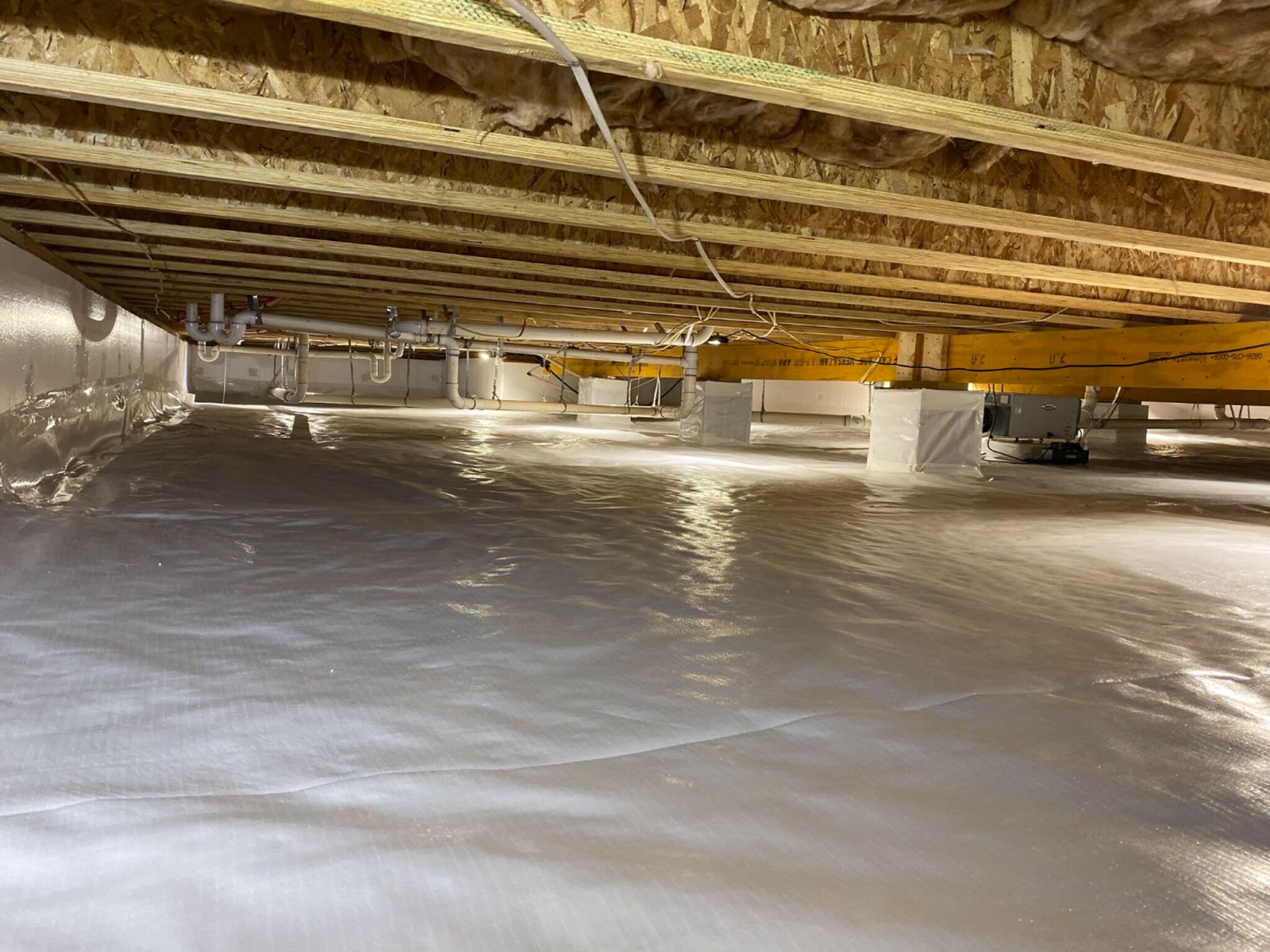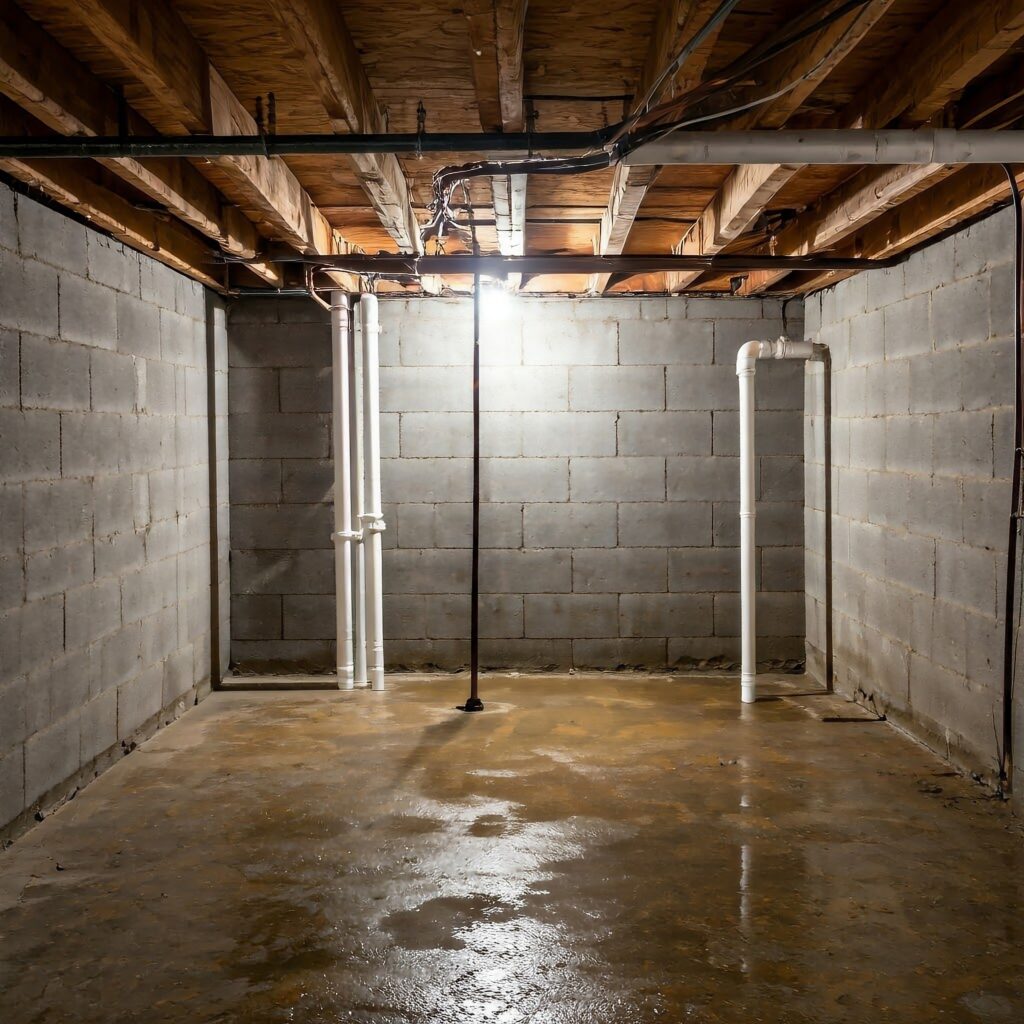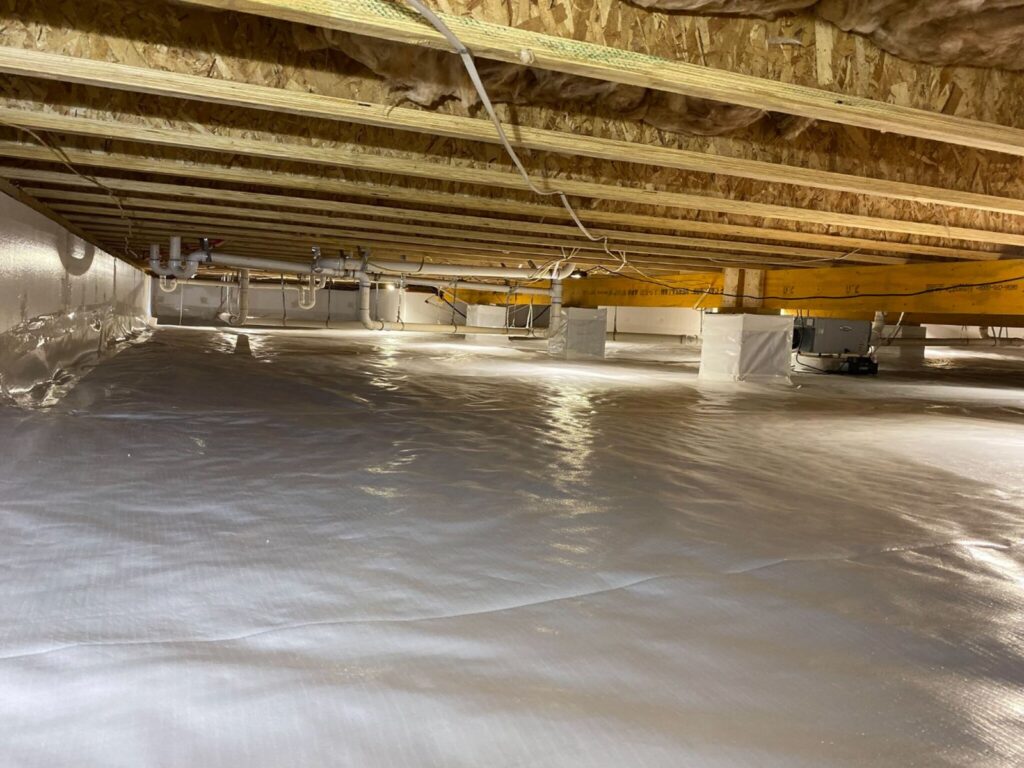Crawl space encapsulation can significantly enhance your home’s energy efficiency, improve air quality, and prevent moisture-related problems. However, when done incorrectly, encapsulation can lead to more harm than good, causing costly repairs and ongoing issues. If you’re a homeowner preparing to encapsulate your crawl space, knowing what to avoid is just as important as knowing what to do.
Below, we cover the most common crawl space encapsulation mistakes and how to prevent them.
What is Crawl Space Encapsulation?
Crawl space encapsulation is the process of sealing off your crawl space with a durable vapor barrier, along with other protective measures, to prevent moisture, pests, and air leaks. When done properly, it offers benefits like improved indoor air quality, lower energy bills, and protection against mold and pests.
Mistakes to Avoid During Crawl Space Encapsulation
1. Improper Sealing
Failing to seal all vents, cracks, and entry points can render encapsulation ineffective. Even the smallest gaps can allow moisture and pests to enter, undoing most of your effort.
How to Avoid It:
- Thoroughly inspect the crawl space for cracks, holes, and compromised vents.
- Seal gaps using caulk, foam spray, or mesh covers.
- Install airtight crawl space doors to block external airflow entirely.
2. Using Low-Quality Vapor Barriers
A flimsy or poorly installed vapor barrier won’t protect your crawl space. Thin plastic sheeting can rip or peel over time, resulting in moisture buildup.
How to Avoid It:
- Use a high-quality vapor barrier of at least 10-20 mil thickness.
- Make sure seams are properly overlapped and sealed with waterproof tape to create a continuous barrier.
3. Ignoring Drainage Issues
Overlooking drainage problems like pooling water or high groundwater levels can render your encapsulation worthless. Without a proper drainage system, water will still infiltrate your crawl space.
How to Avoid It:
- Address any existing moisture issues before starting the encapsulation process.
- Install a sump pump and drains to redirect water away from your home’s foundation.
- If possible, regrade your property to direct runoff away from the crawl space.
4. Neglecting Insulation
Encapsulation alone isn’t enough to regulate temperature. Without proper insulation, you risk losing energy efficiency and experiencing condensation issues in the crawl space.
How to Avoid It:
- Add foam board insulation or spray foam to the crawl space walls.
- Avoid fiberglass insulation, as it retains moisture and can cause mold growth.
- Seal the crawl space ceiling if your HVAC system runs below your flooring.
5. Skipping Dehumidification
Even with encapsulation, humidity can still accumulate if not properly managed. High humidity levels can lead to mold, mildew, and wood rot.
How to Avoid It:
- Install a quality dehumidifier specifically designed for crawl spaces.
- Set the humidity level to below 50% to prevent mold growth.
- Regularly check and maintain the dehumidifier to ensure optimal performance.
6. Poor Ventilation Management
Failing to address ventilation can result in stagnant air, creating a breeding ground for mold and bacteria. Balancing airflow is critical to maintaining a healthy crawl space environment.
How to Avoid It:
- Seal off open vents completely as part of the encapsulation process.
- Use mechanical ventilators to distribute air evenly throughout the area.
7. Overlooking Pest Control
Encapsulation doesn’t automatically eliminate pest problems. If you don’t handle existing infestations first, pests may be sealed inside the crawl space or return later.
How to Avoid It:
- Schedule a professional pest inspection and extermination before encapsulation.
- Use pest-repellent materials, such as stainless steel mesh and borate-treated wood.
- Seal all potential entry points as part of the process.
8. Ignoring Local Building Codes
Overlooking local codes and regulations could lead to fines, structural issues, or even redoing the encapsulation entirely.
How to Avoid It:
- Consult your local building department to understand the specific codes for crawl space encapsulation in your area.
- Hire a licensed contractor who is familiar with these standards.
Why Proper Crawl Space Encapsulation Matters
When done correctly, crawl space encapsulation offers several benefits, such as:
- Energy Efficiency: Reduces heating and cooling costs by creating a more temperature-stable environment.
- Improved Air Quality: Keeps allergens, mold spores, and radon gas out of your living spaces.
- Extended Home Lifespan: Protects your home’s foundation and structural integrity from moisture damage.
By avoiding common mistakes, you can reap these benefits and protect your investment.
Partner with Professionals for Peace of Mind
While DIY encapsulation may seem cost-effective, it leaves room for error. Partnering with experienced professionals ensures the job is done right. They can identify and address potential issues like poor drainage, insulation needs, and pest control to eliminate risks upfront.
If you’re ready to encapsulate your crawl space or need advice on where to start, reach out to our team for expert guidance.
Remember, it’s not just about sealing a crawl space; it’s about creating a healthier, more energy-efficient home for you and your family.
Take the Next Step
Contact us today for a no-obligation crawl space inspection and consultation. Protect your home the right way by avoiding costly mistakes!



